(Disclaimer – Not medical advice. Always see a doctor if knee pain occurs.)
Our knees are complex joints that withstand a lot of motion and pressure in day to day activities. When you double that workload with the intensity of a run the appearance of knee pain becomes more common.
If you are currently experiencing knee pain associated with running, you are not alone. Most runners have experienced some form of knee pain during their running career, myself included, and we all have to determine if it is safe to run with the knee pain we experience.
Knee pain associated with running comes in a variety of sensations and intensities that are as unique as the people they affect but don’t worry, knee pain does not always mean you have to stop running. If you know what to look for you may be able to run through some knee pain and even treat it yourself. However, this is not always the case so an understanding of knee pain types and triggers is crucial.
Let’s explore some types of knee pain and their common sources so you can identify if you can run with your knee pain or if you should see a doctor instead.
Assess Your Knee Pain
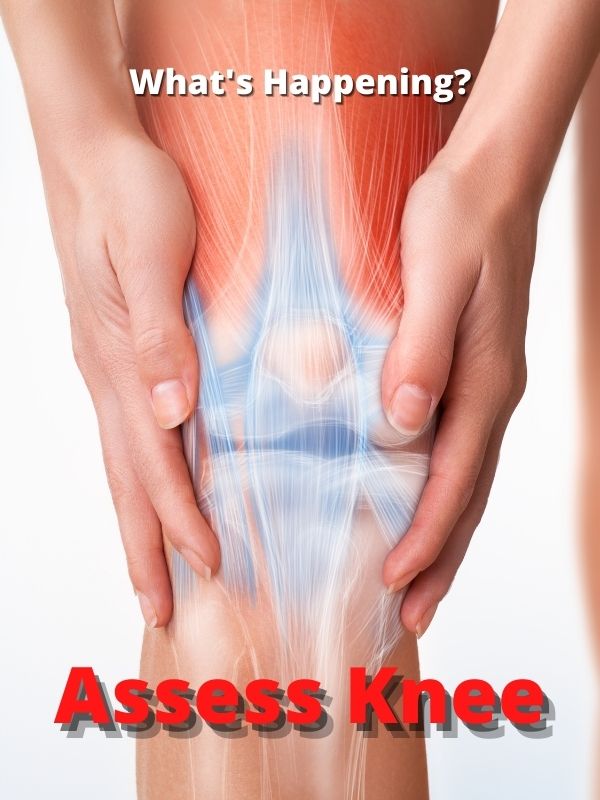
Pain is an extremely personal experience. Everyone interprets and responds to pain differently, so the first step should always be personally assessing your knee pain.
When I notice pain arising in my knees I take the time to ask myself a few questions. This allows me to best assess my pain level, determine probable causes, and identify changes in the pain over time.
- When do I feel pain?
- Before a run, during a run, after a run, or even all three?
- How long does the pain last?
- If this is an ongoing pain consider when it first started. If it is recurring, average the length of each episode.
- Where do I feel pain?
- Get specific with how deep the pain is and work on pointing out the area(s) it affects.
- Are there specific emotions that trigger or intensify my pain?
- Climbing stairs, kneeling, walking, jumping, or maybe something more specific?
- Are my knees buckling or locking?
- Buckling feels like your knees are slightly and unpredictably giving out while locking has to do with an inability to bend the joint in any way.
- How would I describe the pain?
- Get as creative and precise as you need to (ex: dull, sharp, creaky, hot, tingly, etc.)
- Does this pain cause me to move differently?
- This can be described as limping, weight compensation, and other unnatural adjustments to your stride.
- How would I rate this pain from 1 to 10? (1 being the least and 10 being the worst pain you have ever felt)
- Don’t worry about using any specific pain scale, just base it off of your personal experience for future comparison.
I highly recommend writing down these answers, especially if your knee pain is recurring. A written record of your pain helps you notice when the pain changes or worsens in any way, which can otherwise be hard to notice if the change is gradual. This will also help you remember when the pain started and how it has changed if you ever need to relay this information to a doctor for accurate treatment.
Now that you have fully assessed your knee pain let’s take a look at some of the common causes it can be related to. If any of your symptoms fit the conditions discussed you will have a general idea of whether or not you should be running with your knee pain.
Common Knee Pain Causing Conditions – To run or not to run?
- Runner’s Knee – Run with care
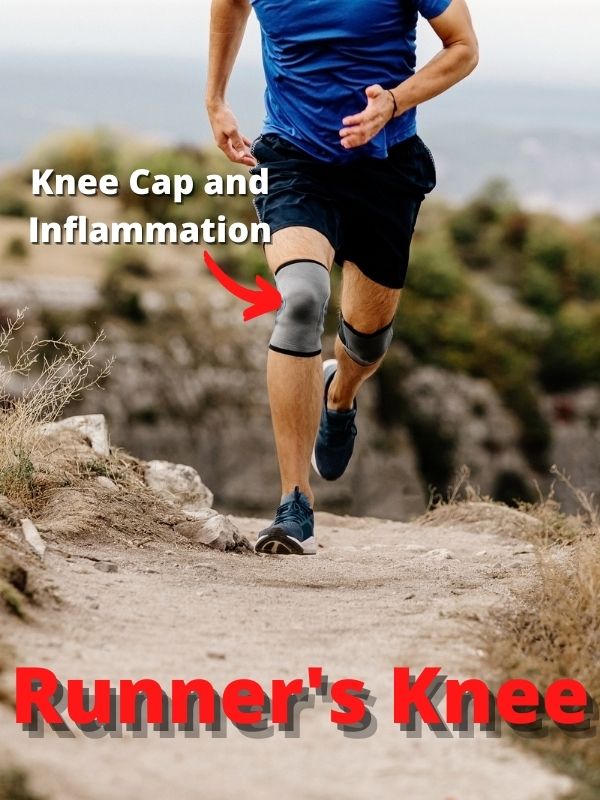
The scientific name for this condition is patellofemoral pain syndrome and it is considered to be the most common form of knee pain experienced by runners.
If you are feeling a dull pain that runs under the kneecap then you may have runner’s knee. This pain may be tolerable at first, but it can increase over time if left untreated.
It is the result of your kneecap moving out of place repeatedly with each step. This movement causes inflammation and pain felt beneath the kneecap. If it is left untreated it can damage cartilage and develop into a more painful condition known as chondromalacia. For this reason, it is extremely important to consult a doctor if you are continuously experiencing pain similar to runner’s knee with little to no improvement.
If you identify runner’s knee early you can try some self-treatment and you can keep running if you wish. If you do decide to continue running be sure to incorporate a few extra rest days and take it a bit easier on your body because rest will provide time for your damaged tissue to heal. Icing the knee can help reduce inflammation as well as pain for short term relief.
For long-term relief and healing, it is important to strengthen your quadricep muscles. If these muscles are uniformly strong they will work to keep the knee cap from moving out of place while you run.
Waiting to run until after the pain has subsided or you have consulted a doctor is always a reasonable option as well.
Tip: If you decide to continue running opt for softer surfaces or shoes with quality shock absorption. You can also focus on longer or lower strides. I have noticed that any effort towards the reduction of impact reduces discomfort in relation to runner’s knee.
- IT Band Syndrome
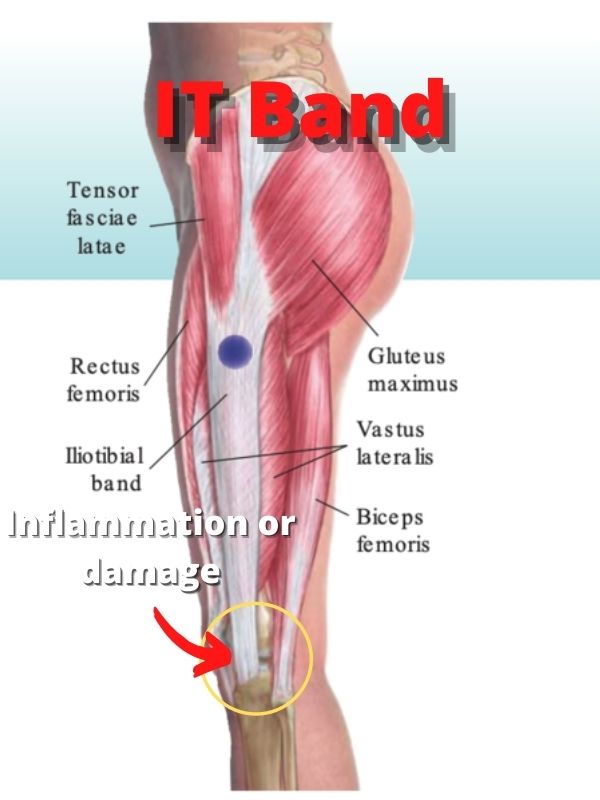
Changes made to Original – Powellle, CC BY-SA 4.0 , via Wikimedia Commons
The iliotibial band is a supportive fibrous tissue that runs from the outside of the hip to the side of the knee. Excessive use or damage to this structure causes inflammation that results in pain on the outer side of the knee.
If this pain is not too intense you can keep running as long as you are addressing the condition. Addressing IT band syndrome looks like regular stretching of the iliotibial band, taking rest days, and maintaining or decreasing the intensity of workouts. If the pain begins to worsen in any way it is best to consult a professional to ensure proper recovery.
Tip: Fibrous tissue can be torn through a sudden increase in intensity or force while running. Once torn it is difficult to heal and can have you off of running for quite some time.
This is why it is important to avoid overexertion while experiencing IT band pain. I feel like it is always better to run soft now so you can run hard when you are better, especially when it comes to tendons and connective bands.
- Ligament & Meniscus Tears
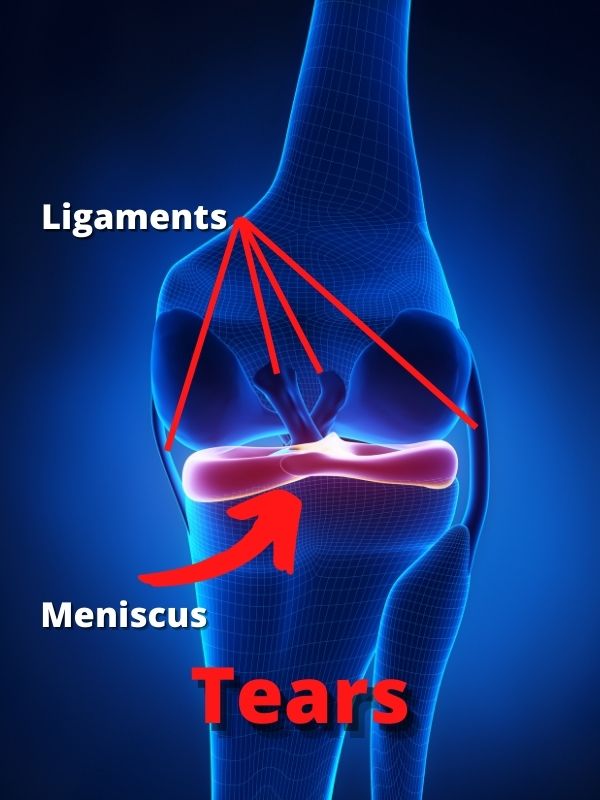
Injuries to ligaments and the meniscus result in intense knee pain that requires immediate assessment by a professional. It will often feel sharp and leave you unstable or restricted in your motion.
With any ligament or meniscus tear you often times can not run as a result of the swelling it causes. Even if you can tolerate the pain and believe yourself to be capable of running it is best not to.
Connective tissues like these are crucial to our mobility and they are difficult for our body to heal. It is best to identify any damage done and halt running to avoid any further damage. Earlier recognition of this condition will often result in a shorter recovery time, so be mindful of all pains linked with instability and swelling.
Unique Knee Symptoms Require Special Treatment
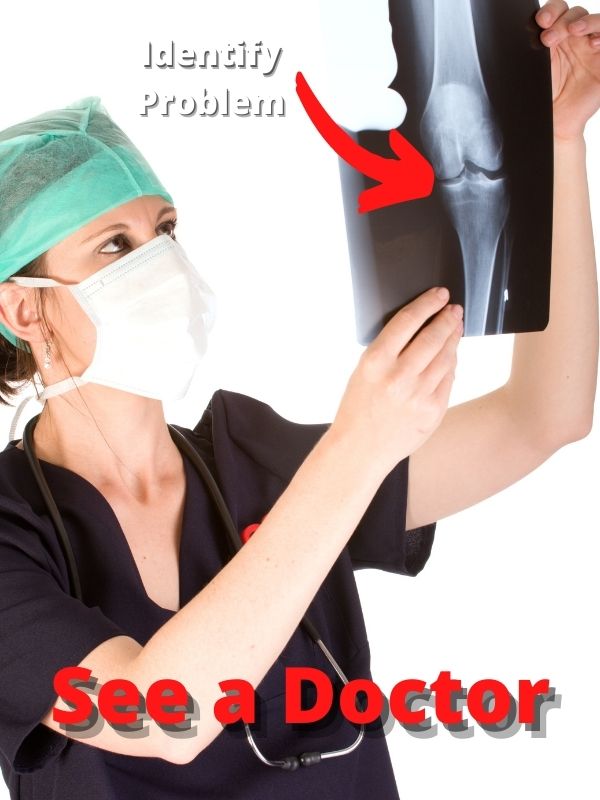
If your symptoms of knee pain don’t match with any of the common conditions listed here it is best to consult a doctor for advice on whether or not to continue running, especially if the pain is intense.
A general rule of thumb is to stop running any time you experience knee pain that you would rank as higher than a four on a scale of ten (ten being the worst pain). This means anything that moves from discomfort to pain, feels sharp, or alters your movement. I have learned the hard way you should never “tough it out”, even when you know you can.
Our unique strides, choices in shoes, environment, training routine, and genetics all contribute to running related knee problems. Some of these problems are rather unique and only identifiable through professional testing, so consulting your doctor will be your best opportunity to get a diagnosis for your pain. I feel that it is also the best way to learn how you should move and treat your body for a fast recovery.
Sure, experiencing some pain while running is not uncommon, but the goal is to enjoy pain-free runs as often as possible. So take care of your body and good runs will follow.
From what I have experienced, it seems that runners are a pretty tough group. Yes, we get injuries just like every other sport, but we often push past them as we have learned to push our bodies’ limits.
This is especially true for individuals who endure intense runs or races that trigger endorphins and direct focus away from any pain. These scenarios make it difficult to identify pain, so it is helpful to be aware of discomfort before and after running as well.
Thanks for visiting Helpshoe.com
References:
https://www.self.com/story/knee-pain-running
https://www.verywellfit.com/when-should-i-run-through-pain-2911369
https://www.runnersworld.com/uk/health/injury/a760238/injury-when-to-run-when-to-stop/

